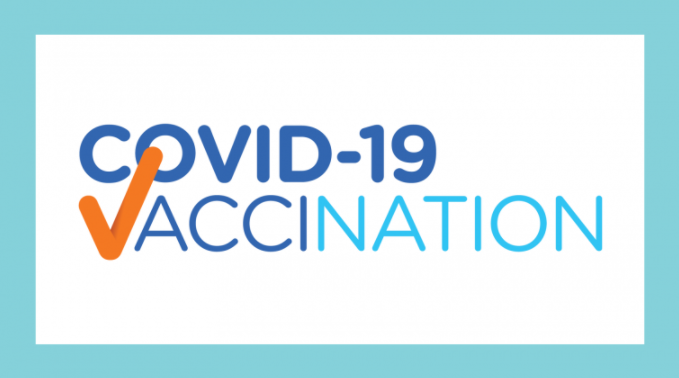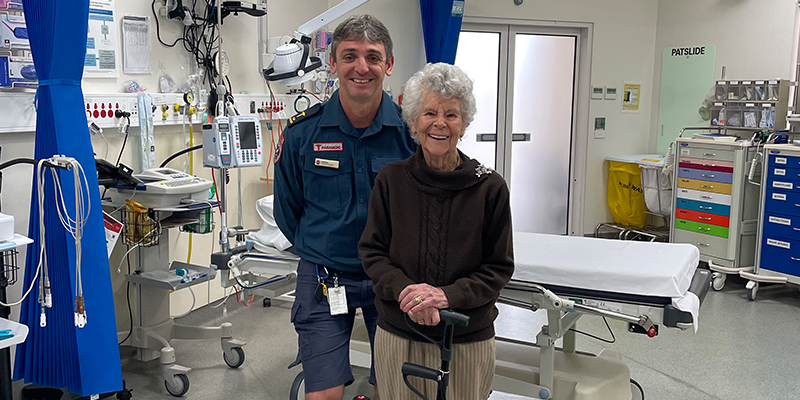
Introduction
Spikevax (Moderna), also referred to as the Moderna COVID-19 vaccine, has been provisionally approved for use as a COVID-19 booster vaccine in people aged 18 years and older by the Therapeutic Goods Administration (TGA). The dosage for use as a booster dose is 50µg (0.25mL), i.e. half of the recommended dose of the Moderna COVID-19 vaccine used for the primary course.
Recommendations
ATAGI previously recommended that Comirnaty (Pfizer), also referred to as the Pfizer
COVID-19 vaccine, was the preferred vaccine for use as a COVID-19 booster, regardless of the vaccine used for the primary course. Following review of recently available data on the safety and immunogenicity of the Moderna COVID-19 booster vaccine and its TGA approval, ATAGI now recommends that:
- The Moderna (50µg) COVID-19 vaccine can be used as a booster dose for people who completed their primary COVID-19 vaccine course 5 or more months ago with a COVID-19 vaccine registered or recognised by the TGA.
- ATAGI considers the Moderna (50µg; 0.25mL) and Pfizer COVID-19 vaccines to be equally acceptable as booster vaccines for all people aged 18 years and older, including pregnant women.
- Both mRNA COVID-19 vaccines are preferred over the AstraZeneca COVID-19 vaccine for the booster dose, including for people who received the AstraZeneca vaccine for their primary course. The AstraZeneca vaccine is not yet TGA approved as a booster but can be used as a booster for people who have contraindications to mRNA COVID-19 vaccines or who had AstraZeneca for their primary course.
- Severely immunocompromised people who are receiving a third primary dose of the Moderna COVID-19 vaccine should receive a 100µg dose. A booster dose is not yet recommended for this cohort. ATAGI will provide advice on the timing of a booster soon.
- A booster dose is not currently recommended for people aged under 18 years, and there are currently no vaccines approved for use as a booster in this age group.
The implications of the newly emerged Omicron variant have been reviewed by ATAGI and need and timing for booster doses revised. Refer to the ATAGI statement on the Omicron variant and timing of COVID-19 booster vaccination.
Background
Benefits of a Moderna booster dose
ATAGI notes that the benefits of the Moderna COVID-19 vaccine booster dose have been inferred from immunogenicity studies.
The safety and efficacy of a primary course of the Moderna COVID-19 vaccine to prevent-COVID-19 was demonstrated in a large randomised controlled clinical trial in adults aged 18 years and older.1 A cohort of 1,080 participants from this trial were randomly selected as the comparison group for a booster study.2 50μg (0.25mL) of the Moderna COVID-19 vaccine was administered to 344 participants 12 years and older who had received a two-dose primary course of either 100µg or 50µg of the Moderna COVID-19 at least 6 months prior.
The protective effectiveness of a booster dose was inferred from a comparison of neutralising antibody titres and seroresponse rates against both the Delta variant and an older strain of SARS-CoV-2 measured 28 days after a single 50µg booster dose, compared to 28 days after the second 100µg primary series dose (day 57). The geometric mean ratio (GMR) in the booster cohort compared with the unboosted cohort was 1.8 (95% CI 1.5 – 2.1), suggesting that antibody concentrations are higher after the booster dose than after the primary course. The difference between the seroresponse rate (defined as 4-fold titre rise) between the boosted and unboosted group was -5.3% (95% CI: -8.8%, -2.9%). The lower bound of the 95% CI at -8.8% met the prespecified success criterion of a non-inferiority margin of 10%.
Safety of a Moderna booster dose
Evidence of the safety of the Moderna booster COVID-19 vaccine is derived predominantly from clinical trials as well as limited post-implementation safety surveillance. The Moderna 50µg booster dose was safe and well tolerated among the 344 boosted participants, which included both 100µg and 50µg primary dose recipients.2 Rates of adverse events within the booster group were comparable to those observed after dose 2 of the primary series, with pain at the injection site the most common solicited local adverse event in both groups. Headache, fatigue and myalgia were reported as systemic adverse events equally across both groups. Axillary swelling or tenderness was the only adverse event more common in booster dose recipients, being reported in 21% (69/330) of participants following a booster dose, compared with 14.2% (2,092/14,687) of participants following their second primary dose.2 No grade 4 adverse events, or vaccine-related serious adverse events or deaths were reported in the booster trial.
Considerations in the choice of booster vaccine brand
Safety and immunogenicity of heterologous booster vaccination with Moderna COVID-19 vaccine
The safety and immunogenicity of a 100µg booster dose of Moderna COVID-19 vaccine was analysed in an open label phase I-II study of healthy adults ⩾ 18 years who had completed their primary course with the Janssen (n=53), Moderna (n=51) or Pfizer (n=50) COVID-19 vaccines3.
Regardless of the initial vaccine primary course, boosting with 100µg of the Moderna COVID-19 vaccine resulted in a significant increase in neutralising antibody titres, including against the Delta variant. No unexpected safety signals occurred, but approximately 60% of participants who received a primary course with an mRNA vaccine reported systemic adverse events following their booster dose with Moderna (mild to moderate malaise, headache and nausea), which was more frequent than participants who received Janssen as their primary vaccine course. No deaths or SAEs were reported following the booster dose in any of the participants.
A phase 2 study from the UK also analysed healthy adults ⩾ 30 years who received AstraZeneca COVID-19 vaccine (n=112), or Pfizer/BioNTech (n=111) for their primary course. Trial participants were boosted with 100µg of the Moderna vaccine (compared with placebo and boosting with other vaccines).4 The 100µg Moderna booster resulted in the greatest increase in neutralising antibody titres and slightly increased reactogenicity compared to boosting with other vaccines.
Comparison of immunogenicity and efficacy between the Moderna COVID-19 vaccine and other vaccines used as booster
There are no published studies that directly compared the immunogenicity of the Moderna 50µg booster dose with other vaccines used as booster. In an open label study where Moderna 100µg was given as a booster at 6 months after the second primary dose, participants achieved neutralisation GMTs at least >3.8 times higher at 2 weeks post-booster compared with 1 month post dose 2 against wild-type, Beta, Gamma, and Delta variants.5 By comparison, the Pfizer COVID-19 vaccine, given as a booster at 6 to 9 months post dose 2 produced neutralisation GMTs 3.29 to >5 times higher after the booster dose than after the second primary dose.5
Comparison of safety between Moderna and other vaccines used as booster
Active vaccine safety surveillance data from the USA has shown that both Pfizer and Moderna booster doses have generally lower rates of local and systemic adverse events than the second primary dose of each vaccine. 6 Local and systemic adverse event rates were generally higher with the Moderna booster than with the Pfizer booster, regardless of the brand of mRNA vaccine given for the primary course. The majority of the reported adverse events were non-serious.
Myocarditis and pericarditis occur rarely after vaccination with Moderna COVID-19 vaccine, more commonly after the second compared with the first dose and in young adult and adolescents, particularly males.7-9 These conditions occur more commonly following COVID-19 itself however, highlighting the benefits of vaccination over risk. While still rare, these conditions have been reported more frequently following the Moderna COVID-19 vaccine (100µg) compared with Pfizer COVID-19 vaccine, when used in a primary course.10,11 Early observational data from Israel (where only the Pfizer vaccine is used in the booster program) showed that a lower rate of myocarditis and pericarditis was reported after a booster dose of the Pfizer vaccine than after dose 2 of the Pfizer primary course.12
Insufficient data are yet available to establish the rates of myocarditis or pericarditis specifically after a booster dose of the Moderna COVID-19 vaccine. In this context, it will be important to monitor rates of myocarditis and pericarditis, particularly in younger males, and when the Moderna COVID-19 vaccine is used as a booster. ATAGI will monitor these data as they emerge from Australia and internationally and will update these recommendations if required. Refer to Guidance on Myocarditis and Pericarditis after mRNA COVID-19 vaccines







